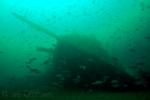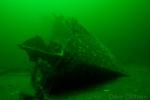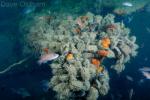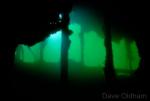Tanks are made to hold air pressure. They come in different materials, colors, sizes, shapes and pressures. To add more confusion, they even have different types of valves. As if this weren’t bad enough, different countries have different standards for tanks, and how the sizes are measured.
Material: Let’s start with the basics. The tanks are made of either steel or aluminum. There are pros and cons to each material. While aluminum is a lighter alloy, it’s also not as strong as steel. Therefore the walls of an aluminum tank have to be thicker, thus defeating the advantage of light weight. On the other hand steel is more prone to rust damage than aluminum. Before you buy a tank, talk to divers in your area and find out what they dive and why.
Color: The color of the tank really has no meaning and is strictly a personal preference. I like the unpainted ones myself. Often the paint on tanks flakes off after a few years, and defeats the purpose. Again, it’s just personal preference.
Size: First, what do we mean by “size”? In the USA we measure tank size by the number of cubic feet of air it can hold when it is full. One of the most common tanks is an aluminum 80, which holds 80 cubic foot of air when full. How much air is 80 cf? It’s about the size of old telephone booth. For those of you too young to remember those, think of a full size refrigerator. We use a compressor to squeeze that air into a tank that measures about 1/3 of a cubic foot on the outside.
I like to think of tank sizes in two categories; primary tanks, and special purpose tanks. Primary tanks are used to hold your main air supply. They range from 60 cf up to 130 cf. Why such a range? One simple reason, it’s different size tanks for different size people. There are other considerations we will discuss later.
Special purpose tanks vary in size from 6 cf up to 50 cf. These are commonly used in addition to the primary tank for backup, to provide inflation to other gear, or to hold other gases.
Pressure: How do we know it’s full? The air around us is under pressure, about 14.7 pounds per square inch (psi). This pressure is created by the gravity pulling on the atmosphere above us. When we compress the air into a tank, we increase the pressure. Different tank materials and construction can withstand different amounts of pressure. Therefore different tanks have different “rated” or usage pressure. Some are as low as 2400 psi, others as high as 4500 psi. Most modern aluminum tanks are rated at 3000 psi. Most modern steel tanks are either 2400 or 3446 depending on the alloy and construction. When the pressure in the tank is equal to the rated pressure, then the tank is full, and contains the rated volume of gas.
Boyle’s law tells us that this relationship between pressure and volume is linear. Thus half the pressure means half volume of gas. If an 80cf tank is full at 3000 psi, then at 1500 psi it has 40 cf of gas. While diving, we carry a pressure gauge to measure our tanks. The gauge measures psi not cubic feet, but like the gas gauge on your car, it give you an indication of what fraction of your gas is left.



